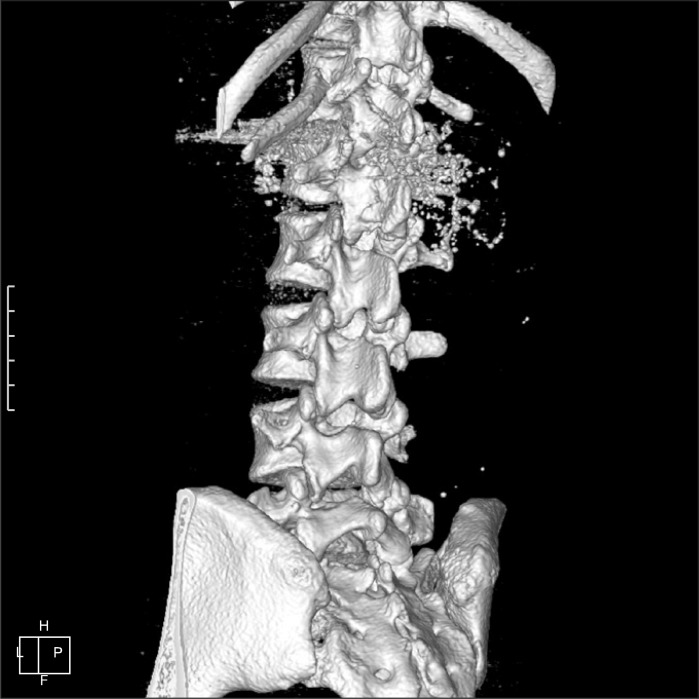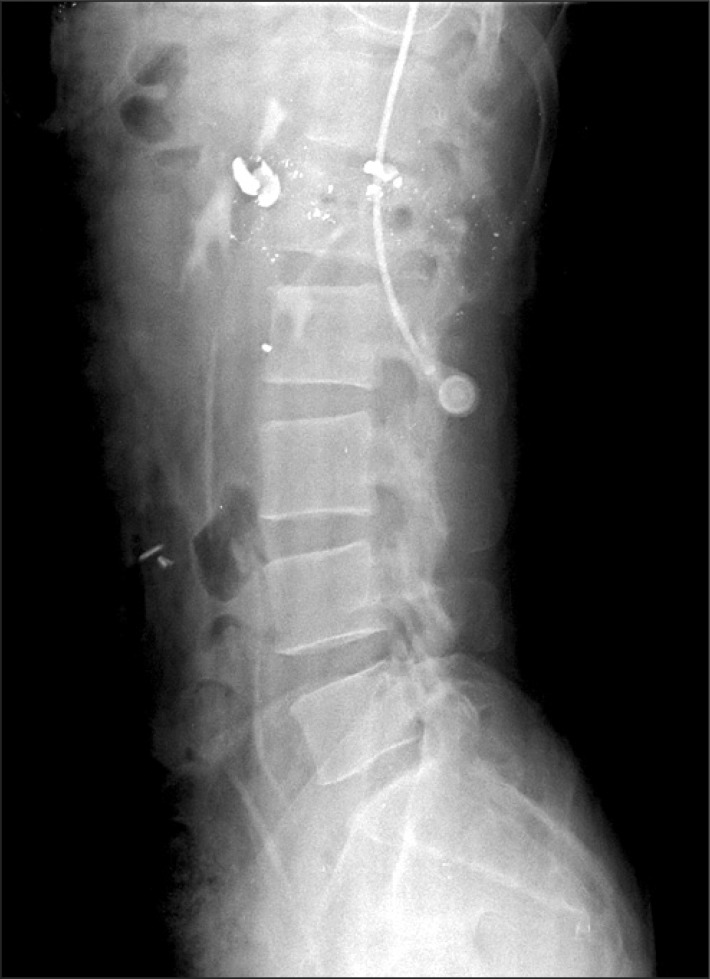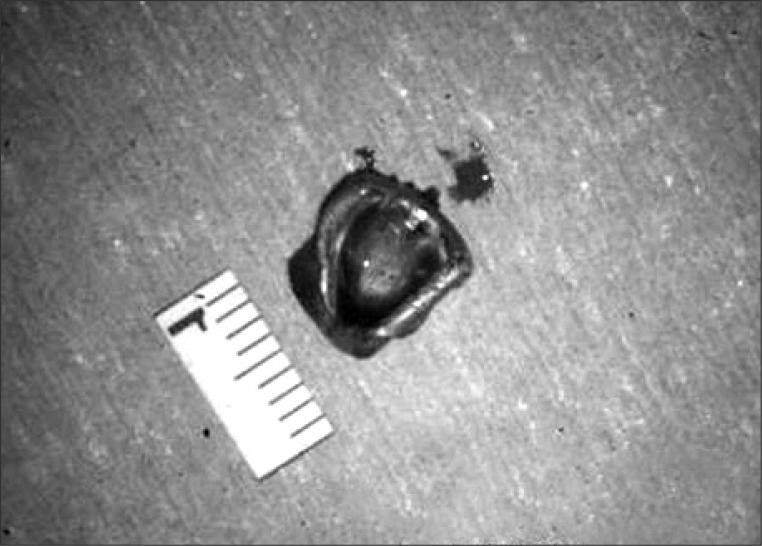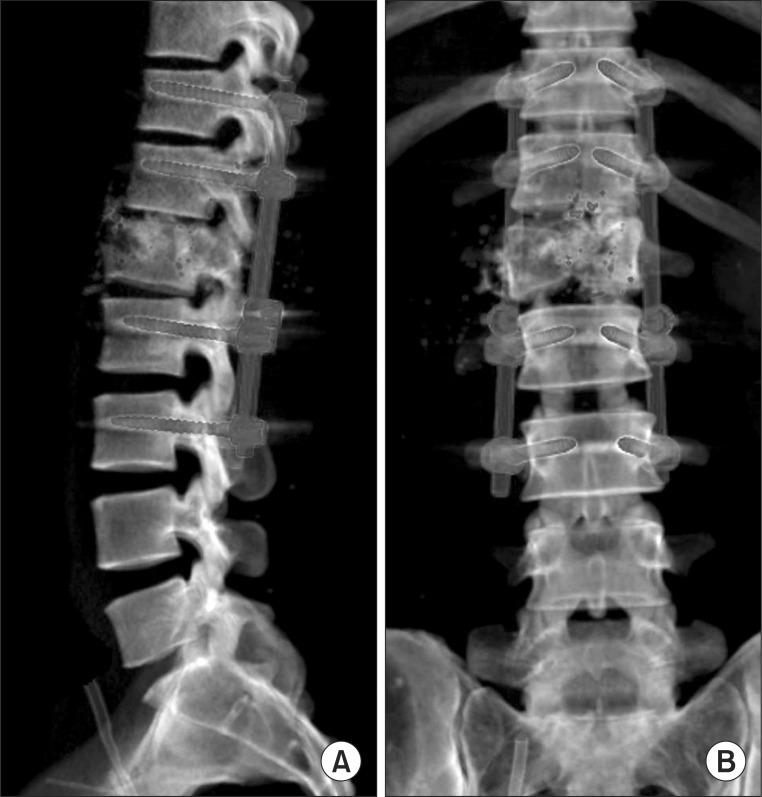Ann Rehabil Med.
2013 Feb;37(1):118-122. 10.5535/arm.2013.37.1.118.
A Case Report of Spinal Cord Injury Patient From a High Velocity Gunshot Wound to the Lumbar Spine
- Affiliations
-
- 1Department of Rehabilitation Medicine, Seoul National University College of Medicine, Seoul, Korea. msbang@snu.ac.kr
- KMID: 2266659
- DOI: http://doi.org/10.5535/arm.2013.37.1.118
Abstract
- We report on operational and rehabilitation management, as well as the outcome, of a patient who with sustained spinal cord injury from a high velocity gunshot wound to the lumbar spine. More specifically, a patient with a gunshot wound to the spine is more likely to sustain a complete injury and have a poor prognosis. As such, there should be concerns regarding associated and extended injuries related to bullet fragmentation as well as the possibility of long-term sequelae.
Figure
Reference
-
1. Bono CM, Heary RF. Gunshot wounds to the spine. Spine J. 2004; 4:230–240. PMID: 15016402.
Article2. Kaufman HH, Pait TG. Gunshot wounds to the spine. Contemp Neurosurg. 1993; 15:1–6.
Article3. Lim SJ, Kim YT, Ha HG. An operative case of air-gunshot wound to the thoracic spine. J Korean Neurosurg Soc. 1997; 26:584–588.4. Bartlett CS. Clinical update: gunshot wound ballistics. Clin Orthop Relat Res. 2003; (408):28–57. PMID: 12616039.
Article5. Ordog GJ, Wasserberger J, Prakash A, Balasubramaniam S. Civilian gunshot wounds: determinants of injury. J Trauma. 1987; 27:943–947. PMID: 3612874.6. Stauffer ES, Wood RW, Kelly EG. Gunshot wounds of the spine: the effects of laminectomy. J Bone Joint Surg Am. 1979; 61:389–392. PMID: 429409.7. Waters RL, Adkins RH. The effects of removal of bullet fragments retained in the spinal canal: a collaborative study by the National Spinal Cord Injury Model Systems. Spine (Phila Pa 1976). 1991; 16:934–939. PMID: 1948380.8. Putzke JD, Richards JS, Devivo MJ. Gunshot versus nongunshot spinal cord injury: acute care and rehabilitation outcomes. Am J Phys Med Rehabil. 2001; 80:366–370. PMID: 11327559.9. Waters RL, Adkins RH, Sie I, Cressy J. Postrehabilitation outcomes after spinal cord injury caused by firearms and motor vehicle crash among ethnically diverse groups. Arch Phys Med Rehabil. 1998; 79:1237–1243. PMID: 9779677.
Article10. Finitsis SN, Falcone S, Green BA. MR of the spine in the presence of metallic bullet fragments: is the benefit worth the risk? AJNR Am J Neuroradiol. 1999; 20:354–356. PMID: 10094370.
- Full Text Links
- Actions
-
Cited
- CITED
-
- Close
- Share
- Similar articles
-
- An Operative Case of Air-Gunshot Wound to the Thoracic Spine
- Paraplegia Following Spinal Cord Contusion from an Indirect Gunshot Injury
- Concept of Gunshot Wound Spine
- Fracture of the Humeral Shaft Secondary to High-Velocity Gunshot (Machine Gun) Injury: A Case Report
- Incomplete Isolated C7 Root Injury Caused by Gunshot Wound: A Case Report





